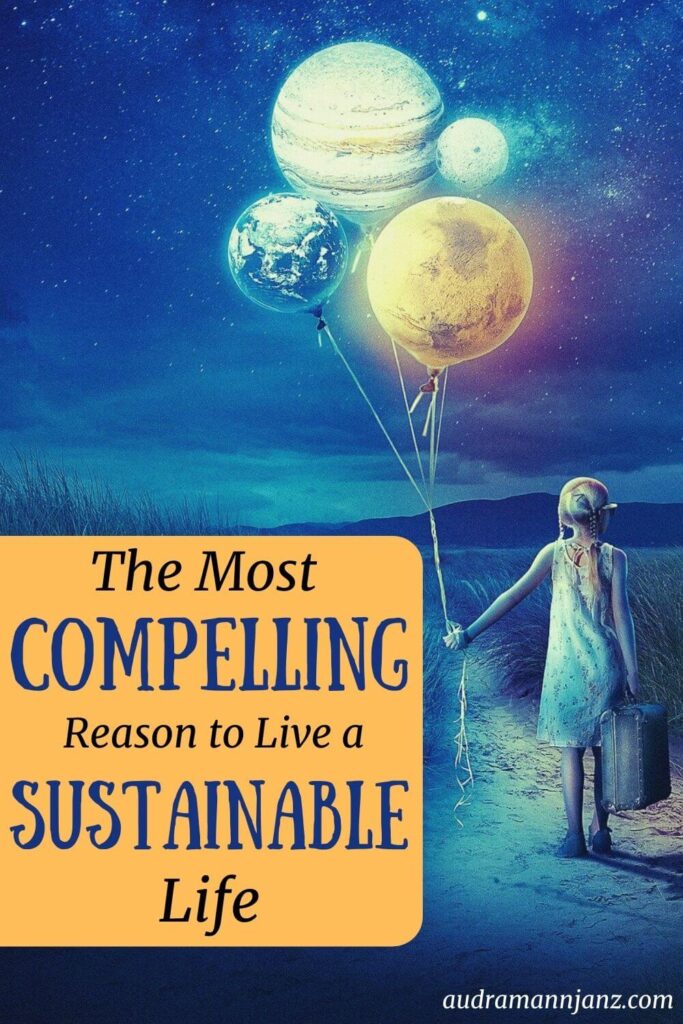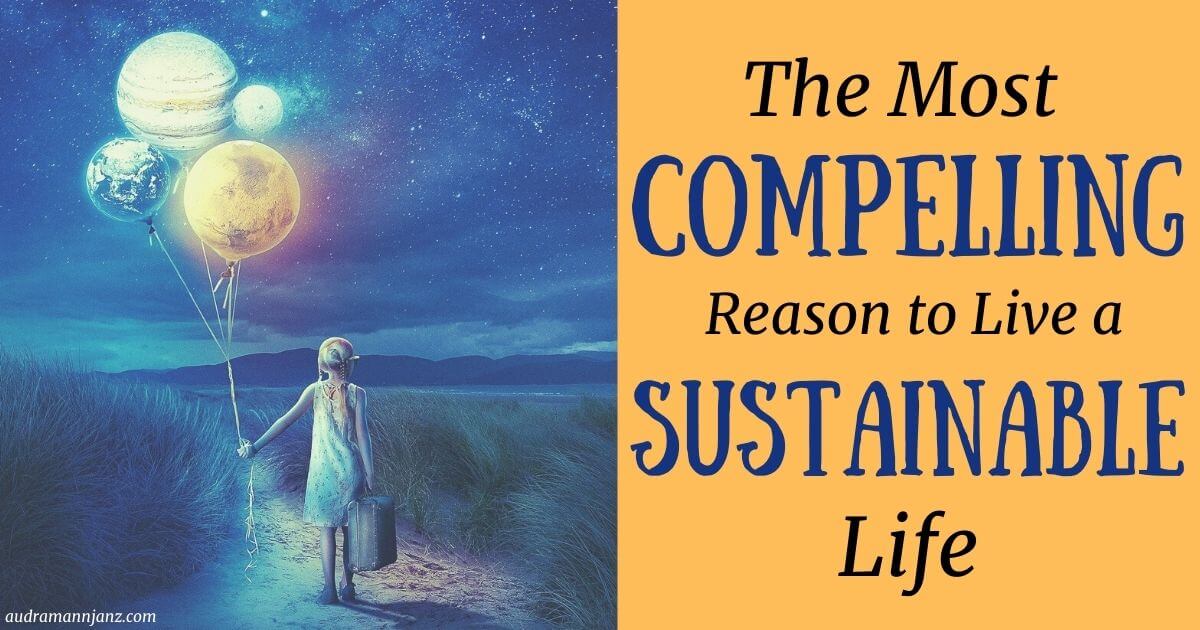There are many, many reasons for living sustainably.
We’ve all seen the horrifying pictures of suffering animals.
We’ve all seen the disgusting photos of plastic islands in the ocean.
We’ve all seen the evidence for climate change – witnessed most vividly in the rapidly receding glaciers and the abandoned, dying coral reefs.
So many posts about sustainability try to convince you to change your lifestyle because you should be ashamed, sad, or afraid of the future if you don’t.
There are measures of truth in all of these arguments.
But they are not compelling for me.
Yes, I want to help the animals.
Yes, I want to clean up the ocean and fix the problem of plastic waste.
Yes, I want to do something about the horrible issues that our future faces.
But I’m not motivated because I’m afraid.
I absolutely feel humanity’s responsibility for the problems our creatures, climate, and coastlines face.
And that does make me feel ashamed sometimes.
But shame isn’t motivating for me.
Neither is guilt, nor fear, nor sadness.
At least, not for long.
Not sustainably.
To live sustainably, you must find a sustainable motivation.
I want to share mine with you.
I am motivated because I am connected to and directly influenced by the health of the Earth.
We have actively convinced ourselves that we are separate from nature and its problems.
But that idea is false.
Here’s the most compelling, positive reason to live life sustainably:
We are part of nature.
We are intimately connected to the Earth.
Even if you don’t feel it.
Even if you don’t subscribe to any religious institutions or believe in anything mystical or spiritual.
Our connection to the Earth, each other, and every other thing on this planet – living or otherwise – is an undeniable fact.
Everything in this universe is made up of the same basic building blocks – all of which have been recycled throughout our universe’s history.
We are physically made up of recycled materials from ancient stars and planets.
And so are all other forms of life on this planet – and Earth itself!
In life, we consume other forms of life – and some inorganic materials, like water and salt – to sustain ourselves.
In death, we decay to form the building blocks for new life.
How can we imagine that we aren’t part of nature’s cycles?
You are made of the same materials as the Earth.
And so is your cat.
And your favorite tree.
And the seashells you found on the beach.
And your great-great-great-great grandmother –
Whose body has now returned to Earth.
Making more life than just yours possible.
(Thanks, Grandma!)
Recurring cycles are woven into the fabric of our universe.
But recycling doesn’t just happen from one star or planet to another.
All the building blocks of Earth are reused, right here on Earth.
The rocks you walk on are recycled.
The air you breathe is recycled.
The water you drink has hydrated other animals and plants on this planet.
It hydrated your ancestors.
It has made up stems of grass.
It has been part of the mysterious depths of the ocean floor.
It has been part of rocks.
It has been part of trees.
And now, as you drink it, that water becomes part of you.
Like it might have been before.
And may be again.
There is a fundamental connection between you and nature.
That connection.
Our connection.
That is motivating.
You are part of nature.
You, just by living, are changing the world.
And that change can be a positive one!
Let’s make it so!
Conclusion
May our connection with Earth be as inspiring to you as it is to me.
May we find hope in that connection.
May we feel motivated to affect positive change in the world that supports us.
The world that we are intimately connected with.
Namaste.





